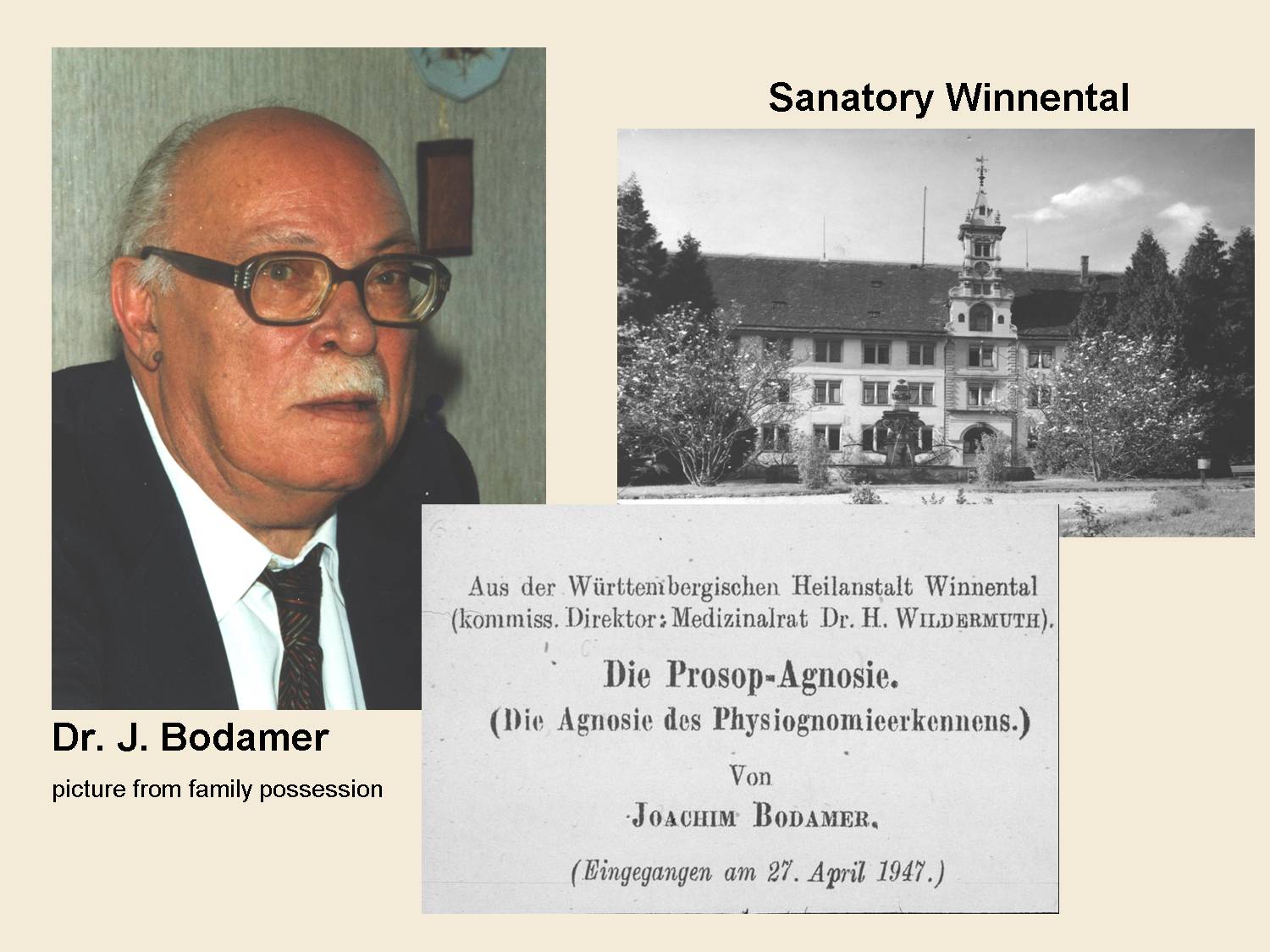Description of Prosopagnosia
The term prosopagnosia was coined by Bodamer in 1947. Itīs an assimilation of the Greek words prosopon (πρόσωπον)
meaning face and agnosia (αγνωσία) meaning not knowing or recognizing. As outlined by A J Larner
(J Neurol. Neurosurg. Psychiatry 75;1063 (2004)) the phenomenon had been described towards the end of the
19th century by Quaglino (1867), Hughlings Jackson (1872, 1876), and Charcot (1883) and may also be mentioned
by Thucydides (Θουκυδίδης, Thoukudídês) and Seneca . As far as I know there is also a passage in the bible
indicative of prosopagnosia but I cannot remember where. Those who might find it, please give me a note kennerk@uni-muenster.de
People with prosopagnosia, or face blindness, cannot easily tell faces apart even if they belong
to people they are very familiar with. The term face blindness is misleading as faces as such are seen
in all details. Prosopagnosia results only in the failure of recognizing individual faces whereas other
intra class objects can be differentiated and also perception of face gender, attractivity or emotions is unimpaired.

Short Biography (with friendly permission of the family)
Joachim Bodamer was born in June 26th, 1910. He went to school in Stuttgart (Humanistisches Gymnasium).
He studied medicine in Heidelberg, Berlin, and Munich. He also was scholar of Karl Jaspers and Nicolai
Hartmann. As a neurologist and psychiatrist he worked at the Psychiatric Department Winnental in Winnenden
- today Zentrum für Psychiatrie Winnenden, Krankenhaus für Psychiatrie und Neurologie
http://www.zpn.de -
and for a short time in Emmendingen near Freiburg/Breisgau. In this time he wrote scientific papers
on the intellectual history of psychiatry and on the pathology of the brain.
In the Second World War he served as a physician in Russia, France, and Bulgaria. It was then that he came
across the phenomenon of acquired prosopagnosia when examining soldiers suffering from brain injuries.
After the war he wrote several books dealing with the spiritual situation of modern humans
in the technological age. He died at July 7th, 1985 in Stuttgart.
